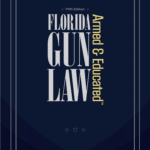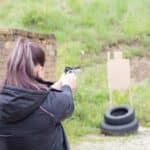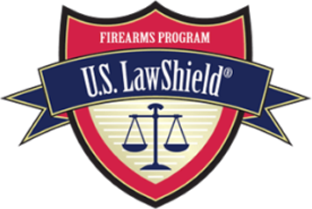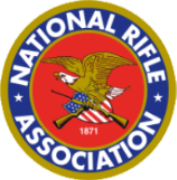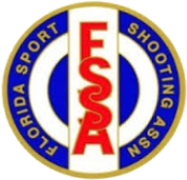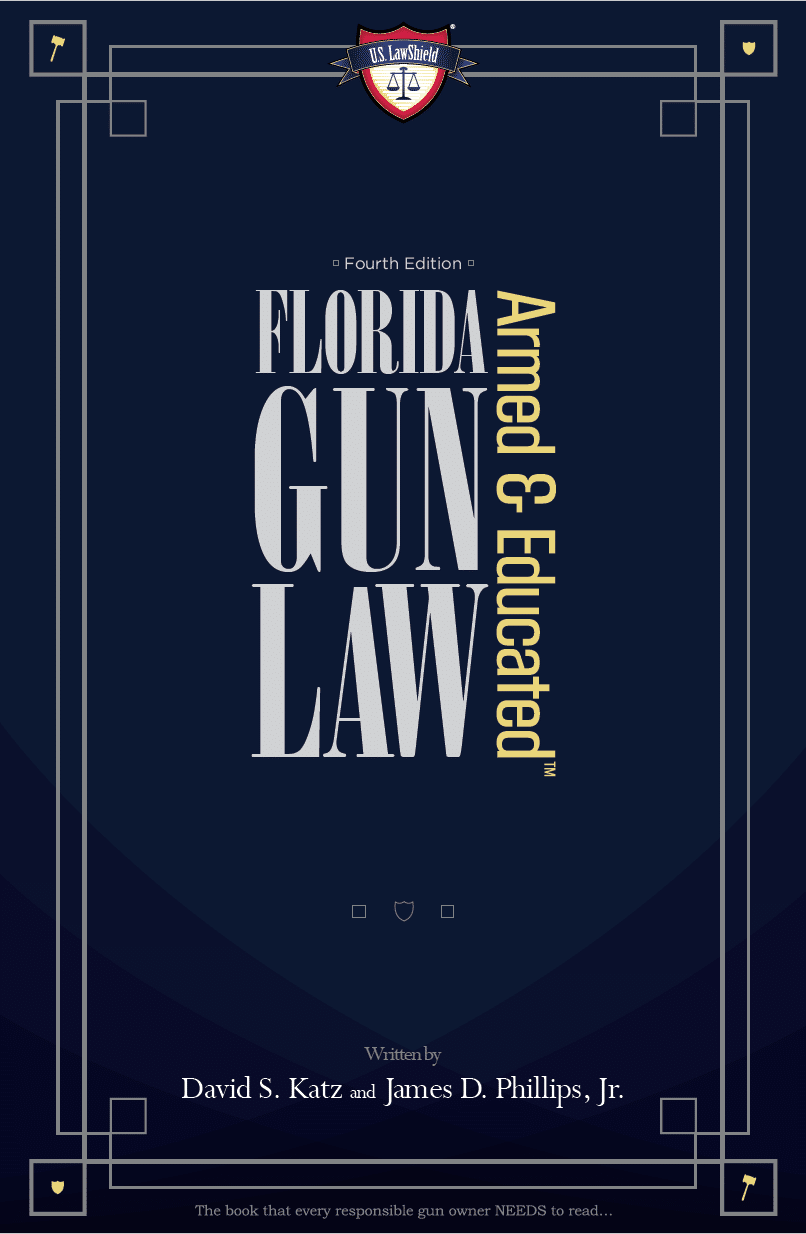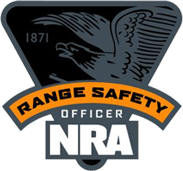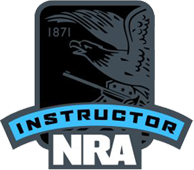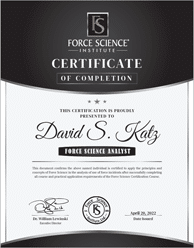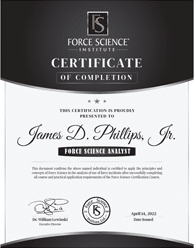
- February 12, 2021
- |
- Gun Laws,Gun Ownership FAQ,Self Defense,Self Defense FAQ,Use of Force
Important Update on Florida Law – The Use of Force!
By David S. Katz
UPDATE: This article is no longer good law. Please see OUR NEW ARTICLE on this topic for updated information! This article is here only for background information on the topic!
The Display of a handgun NO LONGER THE USE OF NON-DEADLY FORCE?
What is considered simply the use of force in Florida is changing. Recently, due to courtroom interpretations of an amendment to Florida law, actions that were at one time clearly legal under Florida law are now questionable. All gun owners in Florida need to be aware of this potential issue. Previously, the courts in Florida determined that the display of a firearm without pulling the trigger, was by law the use of force (non-deadly). This was the case even if you put a gun up to a person’s head. See Rivero v. State, 871 So.2d 953, 954 (Fla. 3d DCA 2004) and Jackson v. State 179 So. 3d 443 (Fla 5th DCA 2015). Further, the courts clearly defined the act of pulling the trigger of a loaded firearm as the use of deadly force even if done while firing straight down into the ground, straight up into the air as a warning shot, or even accidentally while trying to unholster your handgun to use it in a self-defense situation. See Hosnedi v. State 126 So. 3d 400 (Fla. 4th DCA 2013).
The Law in 2013
The 2013 version of Florida Statute 776.012 previously read:
Use of force in defense of person.—A person is justified in using force, except deadly force, against another when and to the extent that the person reasonably believes that such conduct is necessary to defend himself or herself or another against the other’s imminent use of unlawful force. However, a person is justified in the use of deadly force and does not have a duty to retreat if:
(1) He or she reasonably believes that such force is necessary to prevent imminent death or great bodily harm to himself or herself or another or to prevent the imminent commission of a forcible felony; or
(2) Under those circumstances permitted pursuant to s. 776.013.
The Law after 2014 amendment
However, in 2014 Florida Statute 776.012 was amended to read:
Use or threatened use of force in defense of person.—
(1) A person is justified in using or threatening to use force, except deadly force, against another when and to the extent that the person reasonably believes that such conduct is necessary to defend himself or herself or another against the other’s imminent use of unlawful force. A person who uses or threatens to use force in accordance with this subsection does not have a duty to retreat before using or threatening to use such force.
(2) A person is justified in using or threatening to use deadly force if he or she reasonably believes that using or threatening to use such force is necessary to prevent imminent death or great bodily harm to himself or herself or another or to prevent the imminent commission of a forcible felony. A person who uses or threatens to use deadly force in accordance with this subsection does not have a duty to retreat and has the right to stand his or her ground if the person using or threatening to use the deadly force is not engaged in a criminal activity and is in a place where he or she has a right to be.
Although the changes in the law were more than simply adding the words highlighted, those highlighted words have the potential to change a long standing and accepted legal proposition in Florida and have already done so in parts of the state.
Force
Florida law still allows the use of force (non-deadly) to answer an attack or threat of non-deadly force. You can still use non-deadly force to protect yourself, another person, and property. Non-deadly force can still be used to expel a trespasser. However, previously, you could draw your firearm in any of the above situations, even pointing it at the aggressor or trespasser to end the encounter. If you did not pull the trigger, you had not broken the law. Now, that may not be lawful.
What Changed?
The Fourth District Court of Appeals
A recent court decision out of the 4th District Court of Appeals has thrown the previously long-standing interpretation of Florida Statute 776.012 into serious question. In Little v. State, 302 So.3d 396 (4th DCA, 2020) the 4th District Court of Appeals looked to the definition of the word threat in Black’s Law Dictionary. In relevant part, threat is defined as “[a] communicated intent to inflict harm or loss on another or another’s property…” With this definition in mind, the court wrote, “Under the amended-in-2014 … statutes, the focus expands from whether the firearm was discharged to also encompass whether there was a threat to discharge the firearm.” After noting that the 4th District Court of Appeals had previously found that discharging a firearm was the use of deadly force, they wrote, “Thus, threatening to discharge one’s firearm is a threat of deadly force regardless of an intent to actually cause death or great bodily harm of the recipient of the threat.”
The Little case, discussed above, was about whether Little’s attorney provided ineffective assistance of counsel. Since Little’s attorney failed to argue that Little used force to defend property, and instead argued that Little had a right to use or threaten to use deadly force to prevent the imminent commission of a forcible felony (the breaking into of a car). The Court held that it could not say that the actions of the attorney rose to the level of ineffective assistance of counsel due to the change of the law, which now recognized the pointing of a firearm as the threat of deadly force.
The Fifth District Court of Appeals
Prior to the 4th DCA’s decision in Little, the 5th District Court of Appeals decided the case of Copeland v. State, 277 So.3d 1137 (5th DCA, 2019). Both cases were decided AFTER the amendment to Florida Statutes in 2014. Further, both cases in part, dealt with the same issue of ineffective assistance of counsel for failure to request the nondeadly force self-defense instruction. In Copeland, the Defendant displayed his handgun in self-defense, but did not fire it. The 5th DCA decided that it would follow precedent and declared that, “…Copeland’s display of his handgun does not fall under the category of deadly force as a matter of law.” They did this after recognizing the current wording of Florida Statute 776.012 and found that Copeland’s lawyer was ineffective since he did not request the non-deadly force jury instruction.
The Second District Court of Appeals
Prior to either of the above decisions, the 2nd District Court of Appeals was asked to decide a similar issue in Marty v. State, 210 So.3d 121 (2nd DCA 2016). At issue was whether Marty’s counsel was ineffective because he did not request a non-deadly force instruction, but instead requested a deadly force jury instruction. In finding that Marty’s counsel was deficient, the 2nd DCA wrote, “Marty pointing a gun at Valenzuela without firing at her did not, as a matter of established law, constitute deadly force.”
This decision was also made after the 2014 change to the statutes.
Effects of the Rulings
As noted, none of the courts were asked to determine whether the Defendants were guilty of a crime because they pointed a firearm at an alleged robber, or attacker, exceeding the amount of force they could lawfully use. The questions were only if the attorneys representing the Defendants effectively represented them because none of them asked for the proper jury instruction or made the proper argument.
HOWEVER, prosecutors can use the 4th District Court of Appeals reasoning to argue that a person who points a firearm at another person, or even displays a firearm is implicitly threatening the use of deadly force, thereby breaking the law. Courtrooms found within the 5th District Court of Appeals are bound by the decision made by the 5th District Court of Appeals. These include all county and circuit courtrooms in Orange, Osceola, Volusia, Flagler, Putnam, St. Johns, Lake, Marion, Sumter, Citrus, Hernando, Brevard, and Seminole counties. If the question is, did a defendant’s lawyer provide ineffective assistance of counsel because they asked for the wrong jury instruction or made the wrong legal argument based on not asking for a non-deadly force instruction when the sole action of the defendant was pointing a firearm, these courts are bound by the decision in Copeland. Courts in the jurisdiction of the 2nd District Courts of Appeal are similarly bound by the decision of the 2nd DCA in Marty. Finally, courts within the jurisdiction of the 4th District Court of Appeals are bound by the 4th DCA’s decision in Little.
Courts outside of these jurisdictions are not bound by any of the decisions above since there is conflict between the District Courts of Appeal. Until the Florida Supreme Court decides what the law in Florida requires in this situation, this inter-district conflict will provide different results to those accused in Florida depending on where in the state their incidents occur.
Further, since this issue is not directly on point, if a person is charged with a crime because a prosecutor believes they used more force than the situation allowed, the above decisions are only persuasive argument. They are a good indicator how the Appeals Court will decide the issue but are not binding on the lower courts to resolve the issue. A lower court can easily distinguish the case from one of ineffective assistance of counsel and then decide the matter differently, should they choose.
To sum this all up, we can no longer say with certainty that the act of displaying or pointing a firearm in Florida is by law the use of non-deadly force. If you choose to draw your weapon during a dispute, ensure that the situation will allow you to use or threaten to use deadly force, or you could face prosecution as a test case.
To learn more about the use of force in Florida, click here.
To learn more about the definitions of force and deadly force in Florida, click here.
Get in touch

"*" indicates required fields
Copyright © 2024 The Firearm Firm All rights reserved.

